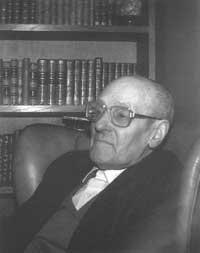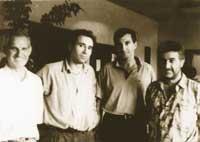The old go. In memory of Karlos Santamaría
1998/01/01 Zalbide, Mikel Iturria: Elhuyar aldizkaria
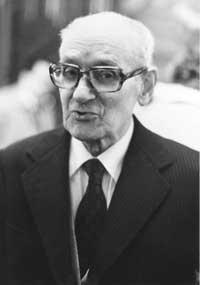
I don't know when and where I first met him. I think it was in Euskaltzaindia, but I'm not totally sure. He knew one of his sons, Antton, from the School of Engineers. The father, for his part, in newspaper articles or in some book. I still remember, for example, the “De Berceo a Carlos Santamaría” by José Artetxe. This weekend I have read again the prognosis of Don Carlos:
“Zorrotzena, bere prestakuntza matematiko bezala, informazioa eta lan gaitasuna duen ala ez, arazoak ikusten ditu, bere hondonada ez eta independentziaz, eta, azkenik, bere baldintza suasepak, gazte araren jakinekoa, bere jakinik, kovertiretatik etorri It is Cartesian and intuitive” (Artetxe, 1968, pp. 249-50. ).
Azpeitia's writer was not so wrong, as seen since. I don’t know exactly why people, many people, called him “Don Carlos”. By age? With respect? Did you like it? I can't say. Open man, I was always easy to deal with, who did not ask the title “Don” to anyone. Some of us knew that he had been a professor of mathematics for the youth of King Juan Carlos (preceptor), that he had fame and recognition here and abroad (in the field of thinkers, for example), that he had already learned that as a meteorologist he had worked for many years… but I don’t know if he was called “Don Carlos” because of that: I don’t believe it. Deep down he knew of himself, and I don't think he would be fond of looking for axal falsehoods.
I met him with Joxe Miguel Zumalabe or simultaneously, around 1974 or 75. I always thought they were close friends. One euskaldun zaharra and another new. Joxe Migel, strongly integrated in the ethnocultural authenticity of his parents, wants to add to the socio-cultural evolution of the new society the Basque dimension Don Carlos: a session of two friends and a joint session, as I remember. They were neither of these human castes nor of the long ones. Without special luxury, they showed themselves to the taste of the kids wanting to collaborate and, above all, always ready to respond to the needs of the Basque language at every moment. There seems to be a tendency to do so: for example, when ikastolas found an institutional shelter. They were men of action for peace, from end to end. Many times they showed me a strong hope for the institutional framework that was to come after the dictatorship.
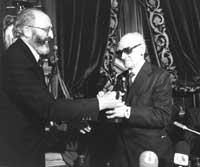
In the preparations for this new framework great importance was recognized to the pooling and updating of the language. In this sense, Koldo Mitxelena basically considered: Therefore, most of the young people who at that time plunged into Basque culture in one way or another. The level of knowledge and language development was obviously not equivalent to Koldo. They also knew that very well and recognized the master of the renter in front of them and often praised him. In another order of things, Zumalabe, especially architectural, mathematical terminology and reading algebraic formulas, enthusiastically undertook corpus planning. I would like to address this issue with some precision. I know that he made many efforts terminologically: in this work I had with him (in Euskaltzaindia, every Saturday, J. M. With Zumalabe and Jesus Mari Goñi) the longest and most solid knowledge. But to me it seems to me the work he did in the magazine Elhuyar on the reading of formulas in Basque (especially for its later impact).
How to read mathematical formulas in Basque? How the teacher should express himself when speaking the word and for students to understand it well
a – b = c,
a b,
x 2 + and 3 = z
and many more? At that time, the Elhuyar revolved around this problem and asked Don Carlos for his opinion. Hence came the article of Santamaría. We started preparing the math books, giving the first technical literacy courses to EGB teachers, and the issue had to be a quick and clear answer. Don Carlos responded quickly and (in our opinion) with some clarity. It was not then, nor is it now, the pair of articles that are read under the tail without removing the eye (in numbers 6 and 8 of the magazine), but it was a clear example of this in some basic points.
The only debate that arose between us is basically that the international formulation has to bend the word order and form of sewing of the Basque language, or that we have to bend it (putting our seam in many cases upside down), the structure of that mathematical formulation? The question was not really so novel among us: Sabino Arana had already been trying to change the old succession of Basque numbers from the system of the twenties (twenty, forty, sixty, …) to the decade (“international”: amar´, ber´´, iruramar´, lauramar´,…), something that we did not even know. Here, however, it was not a question of maintaining the original path of always or of adopting a new path (“rational-international”), but of taking a good path where there was no way.
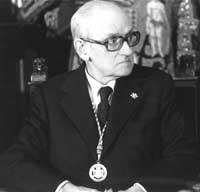
From the beginning of the article, the choice of Don Carlos between authenticity (success) and international novelty (road diverter) was shown: “Some believe that the Basque reading of formulas must be done without breaking the Basque custom. But since the calculation has its own syntax, it seems barbaric to want to associate its reading with the particular syntax of each language.” Now we know that things are not as simple as Don Carlos explained in 1976. It is not true, first of all, that the “special quality of each language” is always and everywhere “so special”. We well know that, as a result of walking and comparing those here and there, there appears a form of basic sewing (similar to several languages of Western Europe) and not by chance, but excels in mathematical formulation. Nor is it true that mathematical formulation is so fully applied to all languages.
These considerations, however, do not substantially detract from the dichotomy so exposed by Santamaría. Since then we know that Jesus Mari Goñi is also owed much, that Don Carlos's proposal has won several key points. Does it not seem natural for our children to say “three roots sixty-four equal four”? Be careful, however, with the great triumphalisms: this language that is spreading among schoolchildren will always have a weak life force, unless the collectives that must address these issues in their respective fields of work act in Basque (and so). Should we say in relation to this activity where we are at the moment? The merit of having devised and launched a comfortable solution for the most concrete needs of the school world cannot be denied by anyone to Don Carlos.
It was Franco and the new mandate came. Shortly after, in the second year before autonomy, Santamaría was appointed Education Counselor (and not Counselor). I worked in the technical training in Basque of EGB teachers and, above all, BUP, among others, at that time (in addition to dealing with the production of Elhuyar textbooks and the preparation of some UZEI technical dictionaries). At that time when the Schools of Teachers had to adapt to the new needs, Don Carlos constituted a broad Commission, as “Mixed Commission”, together with the Rector of the University of Bilbao (now UPV-EHU), which had to address these and other issues. I wanted to participate in that commission and I wanted it to.
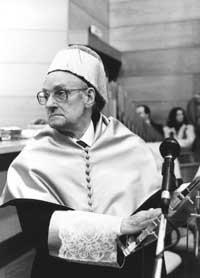
Thus I began, without neglecting the duties that existed until then, when learning what it was to be a member of the newly born Administration Commission: one of them to Oñati (we met a couple of times in the old University House) and another (in most cases) to the Campus of Leioa, meeting room of the Rector, to help design and implement plans of Euskaldunimartín university in the Campus. The rector Martin Mateo was also a simple man who marked the master lines and gave a great freedom of work. With Don Carlos I had, in my image, that touch of sage that encouraged me to think if I did not worry too much about simple things. Since then I have known that age also has something to do with it. Not everything was, however, a question of edade: for something he was appointed, a few years later, at the head of the “Commission of the Twenty Sages of Spain”.
We worked, however, in sub-commissions. I have very good memories of the many colleagues and especially of the work procedure that has been created.
I rarely had the opportunity to talk to Don Carlos at that time. On the one hand, he advanced in age and on the other, his obligations multiplied. At that time when he barely had resources, the number of pages he addressed at the same time was striking: it was probably the moment that helped a lot, time and probably the illusion of a whole generation.
During his time as a counselor he tried to create the basis for his own administration. It paved the way for defining command capabilities and guiding the teaching system we know today. He did it calmly, without lifting large powders. He used to be quite skeptical about work and the benefit of suffocation. From time to time, with his malice, it was said that the man also needs the fan point. However, he left us working in his hand. Who refuses?

Gai honi buruzko eduki gehiago
Elhuyarrek garatutako teknologia




